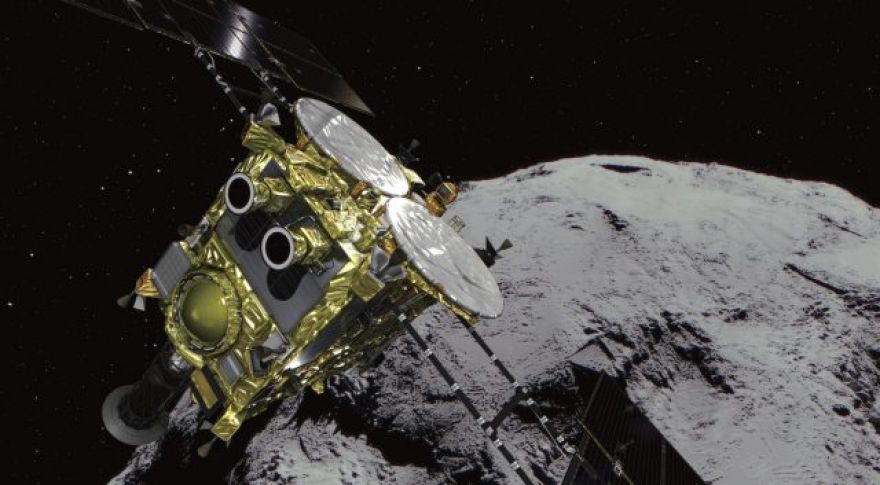
Japan’s Hayabusa 2 Spacecraft Reaches Asteroid, Prepares to Collect Sample
Japan’s Hayabusa 2 spacecraft has spent more than three years alone in the emptiness of space on its way to rendezvous with an asteroid. The Japanese Space Agency (JAXA) has now confirmed that Hayabusa 2 is . On the agenda are numerous mapping and remote surveys, as well as a brief landing to collect samples for return to Earth.
The spacecraft has spent the last three and a half years traveling 177 million miles (285 million kilometers) from Earth to meet up with the asteroid Ryugu. This object is about half a mile across and a member of the carbon-rich C-type asteroid family.
Hayabusa 2 won’t enter orbit of Ryugu. After shutting down its ion engines several weeks ago, the craft has used maneuvering thrusters to chart a zig-zag pattern as it closes in on Ryugu. After scanning for debris in the space around the asteroid, Hayabusa 2 has taken up station 12 miles (20 kilometers) above the surface.
JAXA plans to take high-resolution photos and gravitational readings over the coming months. After charting the surface, Hayabusa 2 will attempt as many as three brief landings. The team hopes to collect at least one gram of material from the surface of Ryugu. The first attempt will occur in October of this year, and another could happen as soon as February 2019. Hayabusa 2 also carries a small impactor, which should be able to produce a crater. The team may choose to land a third time inside that crater to collect a sample. This mission is similar to NASA’s , which will reach a different asteroid later this year to collect a sample and return it to Earth.
The asteroid Ryugu.
This is not the first JAXA mission to grab a piece of an asteroid. The original Hayabusa probe studied the asteroid Itokawa in 2005. While that mission wasn’t a failure, it was far from a complete success. The spacecraft experienced issues with fuel leaks and a buggy sample collection mechanism. The mission collected less than one milligram of material from the asteroid, far less than desired.
JAXA says Hayabusa 2 differs in that it’s a science mission first and foremost. The original Hayabusa was a technology demonstration mission that came with greater risks. This time, designers are more confident the probe will perform as expected. So, in the next few years, both OSIRIS-REx and Hayabusa 2 could send bits of ancient asteroids back to Earth for study.